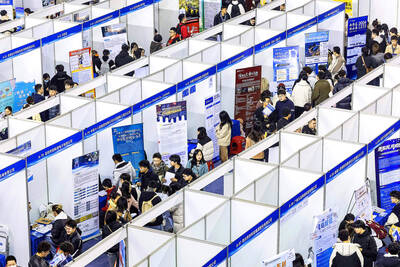US crude oil shipments to China will rise sharply in coming weeks, US traders and shipbrokers and Chinese importers said, as the world’s top economies gear up to review a January deal after a prolonged trade dispute.
Chinese state-owned oil firms have tentatively booked tankers to carry at least 20 million barrels of US crude for this and next month, moves that may ease US concerns that China’s purchases are tending well short of purchase commitments under the “phase one” trade deal, the people said.
China had emerged as a top US crude buyer, taking US$5.42 billion worth in 2018 before trade tensions brought flows to a near halt.
In January, China pledged to buy US$18.5 billion of energy products including crude oil and natural gas over its 2017 level, implying total value of about US$25 billion this year.
Its US crude purchases through June 30 amounted to US$2.06 billion, according to data from the US Census Bureau, reflecting the COVID-19 pandemic downturn and the limited impact of the “phase one” deal.
However, there has been a recent spike in purchases by China’s state-owned oil and gas firm PetroChina Co (中國石油天然氣) and its largest refiner, Sinopec Corp (中國石油化工), the people said.
A review of the US-China trade deal initially slated for Saturday has been delayed due to scheduling issues, and no new date has been agreed yet.
Already, the monthly-record 32 million barrels of US oil are set to reach China this month, according to Refinitiv Eikon data.
New tanker fixtures, or tentative bookings, to China have jumped even as current oil pricing in other parts of the world might be more favorable for its buyers, said the people, who could not be identified because they are not authorized to speak with the media.
The two Chinese companies each have booked five to six supertankers, that each can hold 2 million barrels of oil, for loadings this month and next month.
US crude exporters Occidental Petroleum Corp, Equinor ASA and Vitol SA, each chartered one or two vessels, shipping sources said.
PetroChina plans to buy 3 million tonnes, or nearly US$1 billion worth of US crude by year-end, a person briefed on the matter said.
“The demand in China has strengthened since COVID-19 restrictions started to be lifted,” an Equinor spokesman said, declining to comment on volumes or bookings.
Sinopec, PetroChina and Occidental did not respond to requests for comment. Vitol declined to comment.
The new deals are intended to show that China still aims to meet its purchase target, the people familiar with the matter said.
“It’s politically driven for sure because there are a plethora of barrels being offered to Asia cheaper than what [West Texas Intermediate crude] lands,” one trader said.
Chinese buyers have snapped up other commodities. On Thursday, they booked deals to buy 197,000 tonnes of US soybeans, the seventh weekday in a row that the government has reported a sale to the world’s top buyer of the oilseed.
“It’s a mandate from higher up, even though PetroChina’s own refining system does not favor US crude as it’s quite fully committed to imports from the Middle East and elsewhere,” one of the sources said.
PetroChina so far has booked about 10 million barrels of US oil loading in this month and next month, Refinitiv’s senior crude analyst Emma Li said.
“The crude of choice for China is now apparently US crude, which supports the US markets and possibly helps weaken Europe and Asia” oil markets, United ICAP energy specialist Scott Shelton said.

Stephen Garrett, a 27-year-old graduate student, always thought he would study in China, but first the country’s restrictive COVID-19 policies made it nearly impossible and now he has other concerns. The cost is one deterrent, but Garrett is more worried about restrictions on academic freedom and the personal risk of being stranded in China. He is not alone. Only about 700 American students are studying at Chinese universities, down from a peak of nearly 25,000 a decade ago, while there are nearly 300,000 Chinese students at US schools. Some young Americans are discouraged from investing their time in China by what they see

MAJOR DROP: CEO Tim Cook, who is visiting Hanoi, pledged the firm was committed to Vietnam after its smartphone shipments declined 9.6% annually in the first quarter Apple Inc yesterday said it would increase spending on suppliers in Vietnam, a key production hub, as CEO Tim Cook arrived in the country for a two-day visit. The iPhone maker announced the news in a statement on its Web site, but gave no details of how much it would spend or where the money would go. Cook is expected to meet programmers, content creators and students during his visit, online newspaper VnExpress reported. The visit comes as US President Joe Biden’s administration seeks to ramp up Vietnam’s role in the global tech supply chain to reduce the US’ dependence on China. Images on

Taiwan Transport and Storage Corp (TTS, 台灣通運倉儲) yesterday unveiled its first electric tractor unit — manufactured by Volvo Trucks — in a ceremony in Taipei, and said the unit would soon be used to transport cement produced by Taiwan Cement Corp (TCC, 台灣水泥). Both TTS and TCC belong to TCC International Holdings Ltd (台泥國際集團). With the electric tractor unit, the Taipei-based cement firm would become the first in Taiwan to use electric vehicles to transport construction materials. TTS chairman Koo Kung-yi (辜公怡), Volvo Trucks vice president of sales and marketing Johan Selven, TCC president Roman Cheng (程耀輝) and Taikoo Motors Group

New apartments in Taiwan’s major cities are getting smaller, while old apartments are increasingly occupied by older people, many of whom live alone, government data showed. The phenomenon has to do with sharpening unaffordable property prices and an aging population, property brokers said. Apartments with one bedroom that are two years old or older have gained a noticeable presence in the nation’s six special municipalities as well as Hsinchu county and city in the past five years, Evertrust Rehouse Co (永慶房產集團) found, citing data from the government’s real-price transaction platform. In Taipei, apartments with one bedroom accounted for 19 percent of deals last